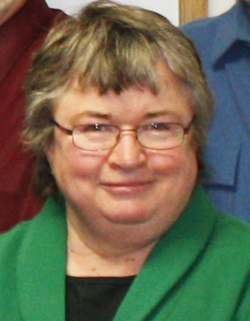Keynote speakers Jennifer Grossman and Rebecca Morgan tag-teamed to bring a message of facts and figures mixed with optimism and urgency in this year’s State of the Foodshed Address at the 4th Annual Farm to Market Connection. Before 120 or so conference attendees, Jennifer explained that our present broken food system is a result of Federal farm policy that encouraged monocultures of commodity production. That system has provided cheap food for decades but with unintended consequences that are only now beginning to be recognized. Recent drought nationwide has shown how vulnerable we are to climate change. Type II diabetes, once found almost exclusively among the middle-aged adults, is now more and more common among elementary school children. We are losing farmers and farmland at a pace that endanger our food supply. Overall, our food system is due for a major overhaul.
So why the optimism? One reason -- the recognition that something must change -- is gaining traction. Rebecca reported on several examples - who is farming, where the farming is happening, what foods are being produced, how the food is grown and distributed, all facets of food production are showing change. Diversification and innovation are the buzz words to restore a healthy food system for producers and consumers.
 | |||
| Jennifer Grossman and Rebecca Morgan |
The development of farmers’ markets and community supported agriculture has served to help farmers find markets for locally grown food, but now we need to get past those smaller opportunities to get into NYC markets. One next step on the way to those markets is the Food Hub – where farmers collectively aggregate products to fulfill larger orders and/or deliver more efficiently.
Jennifer noted that just 4% of the produce that goes through the Hunts Point distribution facility comes from New York State farms despite the fact that we are among the Top 5 states in production of several commodities including cabbage, pears, wine, milk, yogurt, sour cream, maple products and apples. OK, not all those products would go through Hunts Point, but finding innovative ways to access that City market outlet could help some of our larger farms. And did you know the second largest food purchaser in the country is the New York City school system? Capturing event a percent of these markets would make a significant impact on Catskills farmers, economies and communities.
Rebecca continued to outline how we get there – to the school system, to Hunts Point, to the restaurants and shops that feed a population hungry for locally, sustainably grown food. We are increasing the infrastructure of food processing. Our land is still comparatively reasonably priced and available to farmers. Innovative incubators like the Glynwood Center and CADE research ideas and help determine what works. Groups like Catskills CRAFT help young farmers learn the skills necessary. Renewed interest in historically important crops like hops mark resurgence in grain production. Regional artisanal value-added dairy products are making a name for themselves.
Why bother? For one thing, cheap food is often bad food. Poverty impacts people’s health and it is not just an urban problem. Local people also need reasonably priced, good food. We can grow it here and have it available for a decent price. Agriculture helps underpin the local economy. There are tax benefits to having farmland not be developed and to having farms. Also the dollars earned by smaller farms producing locally grown food stay within a community helping to support the local economy before being sent out of the area by way of large corporations. Jennifer is looking for a change not just in food systems but a change in economic systems to benefit local producers.
We are NYC’s Watershed and are officially recognized as part of its Foodshed. Progress is continually being made to help farmers profit from their proximity to this mega market. Together, Jennifer and Rebecca brought us realism and optimism to start our day at the Farm to Market Connection.
Farm to Market Connection photo courtesy of Veccvideography.com






No comments:
Post a Comment